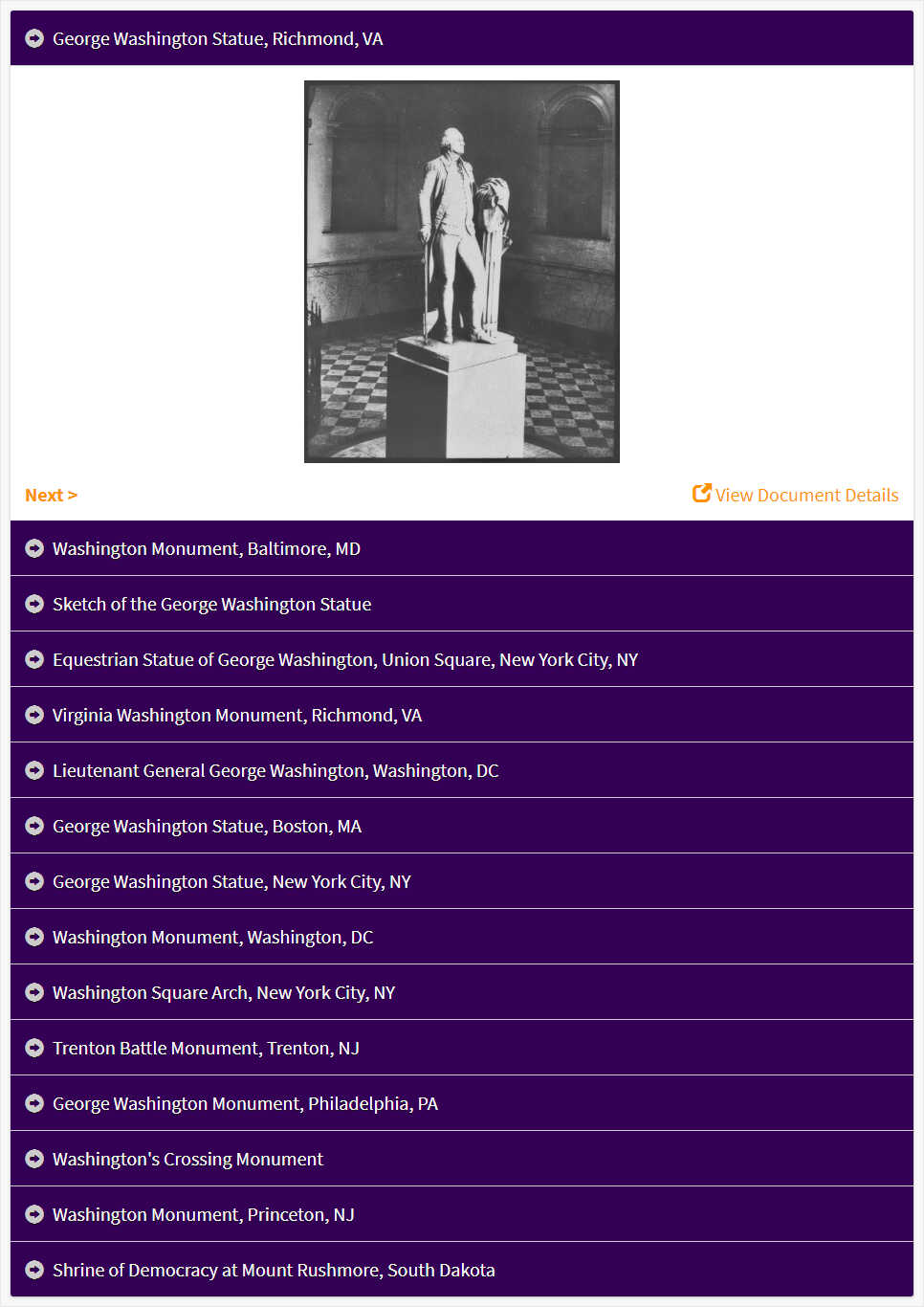Memorials, Statues, and Monuments to George Washington
Making Connections

About this Activity
- Created by:National Archives Education Team
- Historical Era:Across Historical Eras
- Thinking Skill:Historical Analysis & Interpretation
- Bloom's Taxonomy:Analyzing
- Grade Level:Middle School
This comparative analysis activity involves comparing and contrasting several statues of George Washington from across the United States, including George Washington (1792) by Jean-Antoine Houdon, Enthroned Washington (1840) by Horatio Greenough, George Washington (1856) by Henry Kirke Brown, and the Washington Monument (1884).
Students will consider the similarities and differences between these multiple depictions and discuss the qualities of George Washington that they emphasize.
Students will consider the similarities and differences between these multiple depictions and discuss the qualities of George Washington that they emphasize.
Documents in this activity
- Equestrian Statue of George Washington, Union Square, New York City, NY
- George Washington Monument, Philadelphia, PA
- George Washington Statue, Boston, MA
- George Washington Statue, New York City, NY
- George Washington Statue, Richmond, VA
- Lieutenant General George Washington, Washington, DC
- Shrine of Democracy at Mount Rushmore, South Dakota
- Sketch of the George Washington Statue
- Trenton Battle Monument, Trenton, NJ
- Virginia Washington Monument, Richmond, VA
- Washington Monument, Baltimore, MD
- Washington Monument, Princeton, NJ
- Washington Monument, Washington, DC
- Washington Square Arch, New York City, NY
- Washington's Crossing Monument




